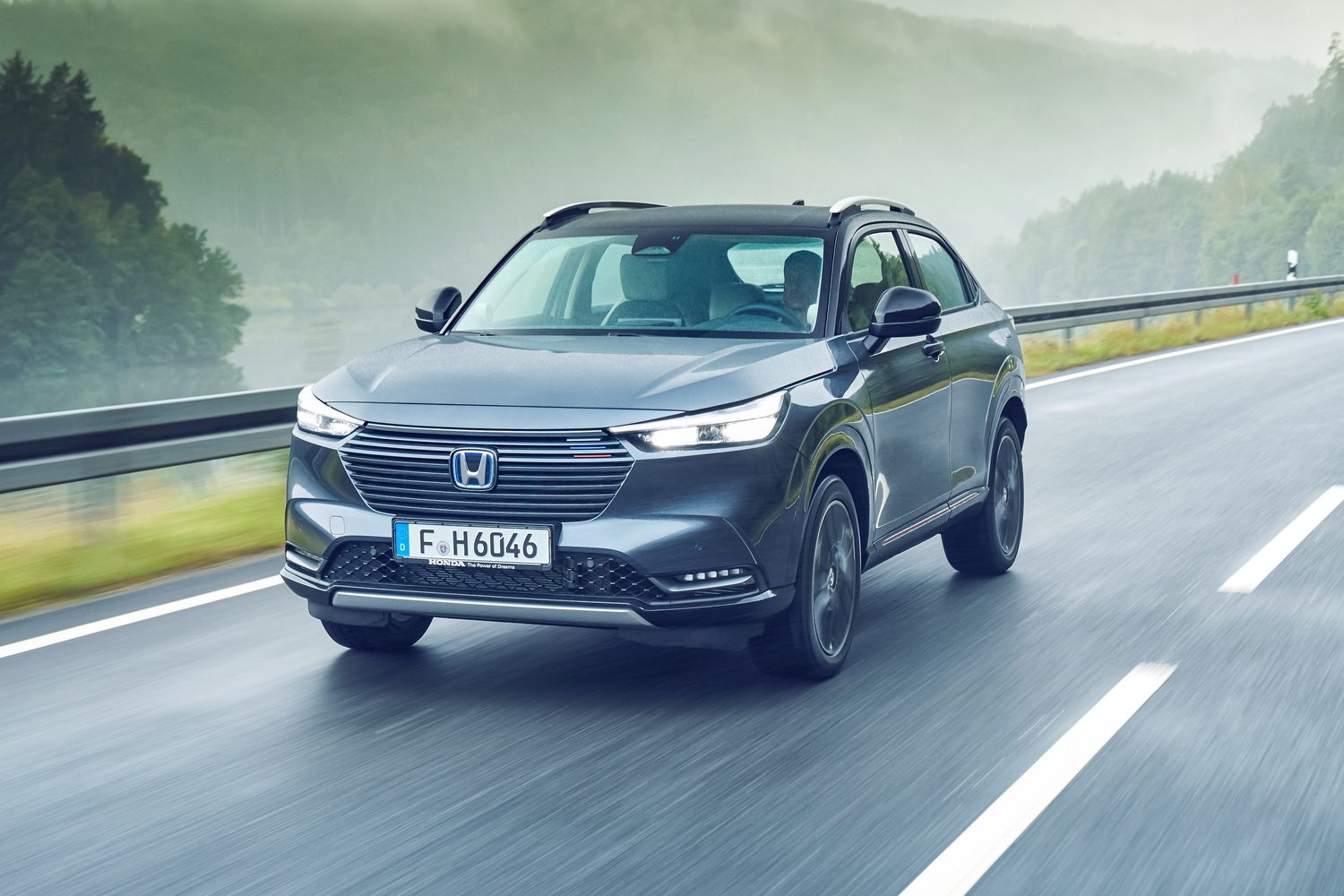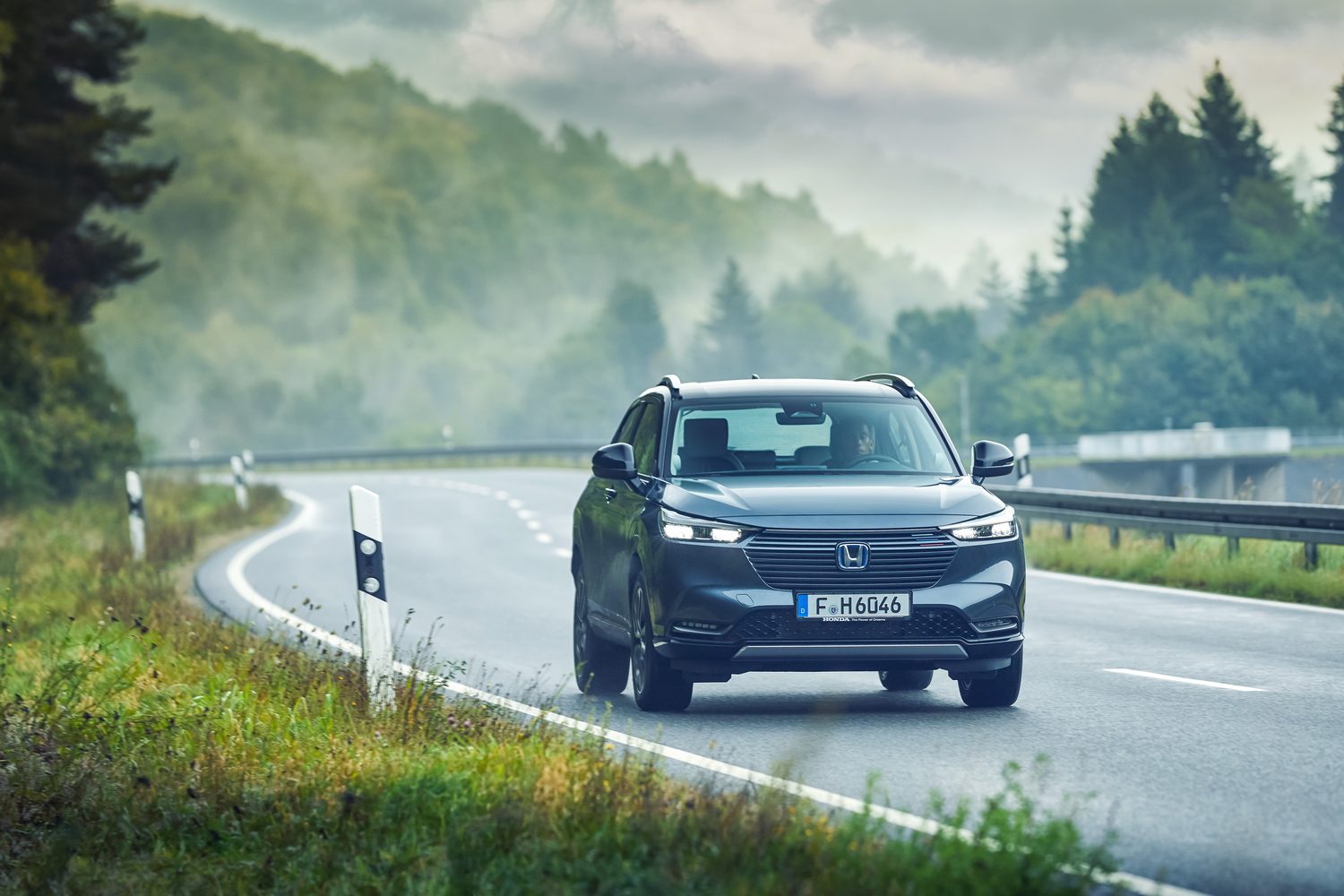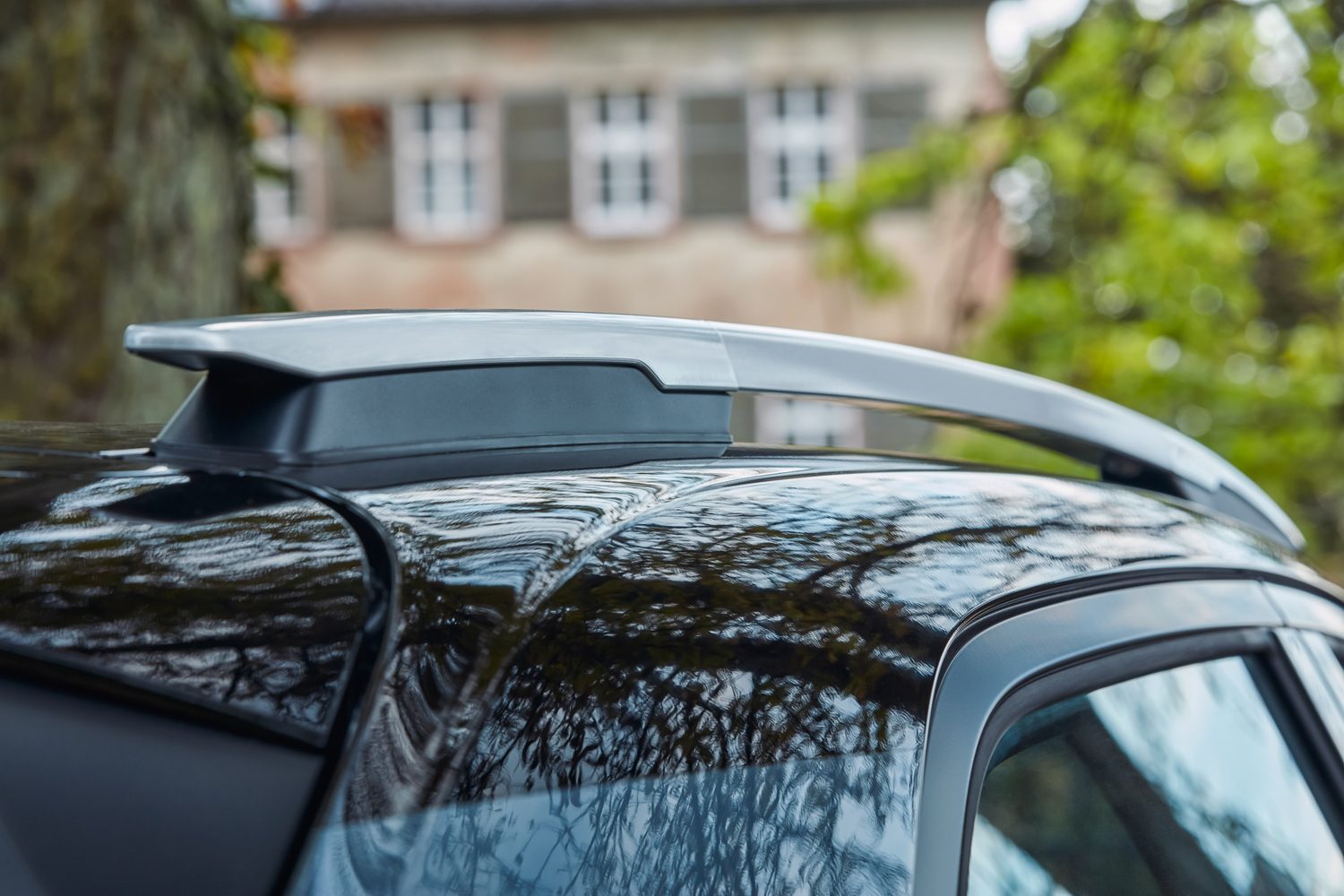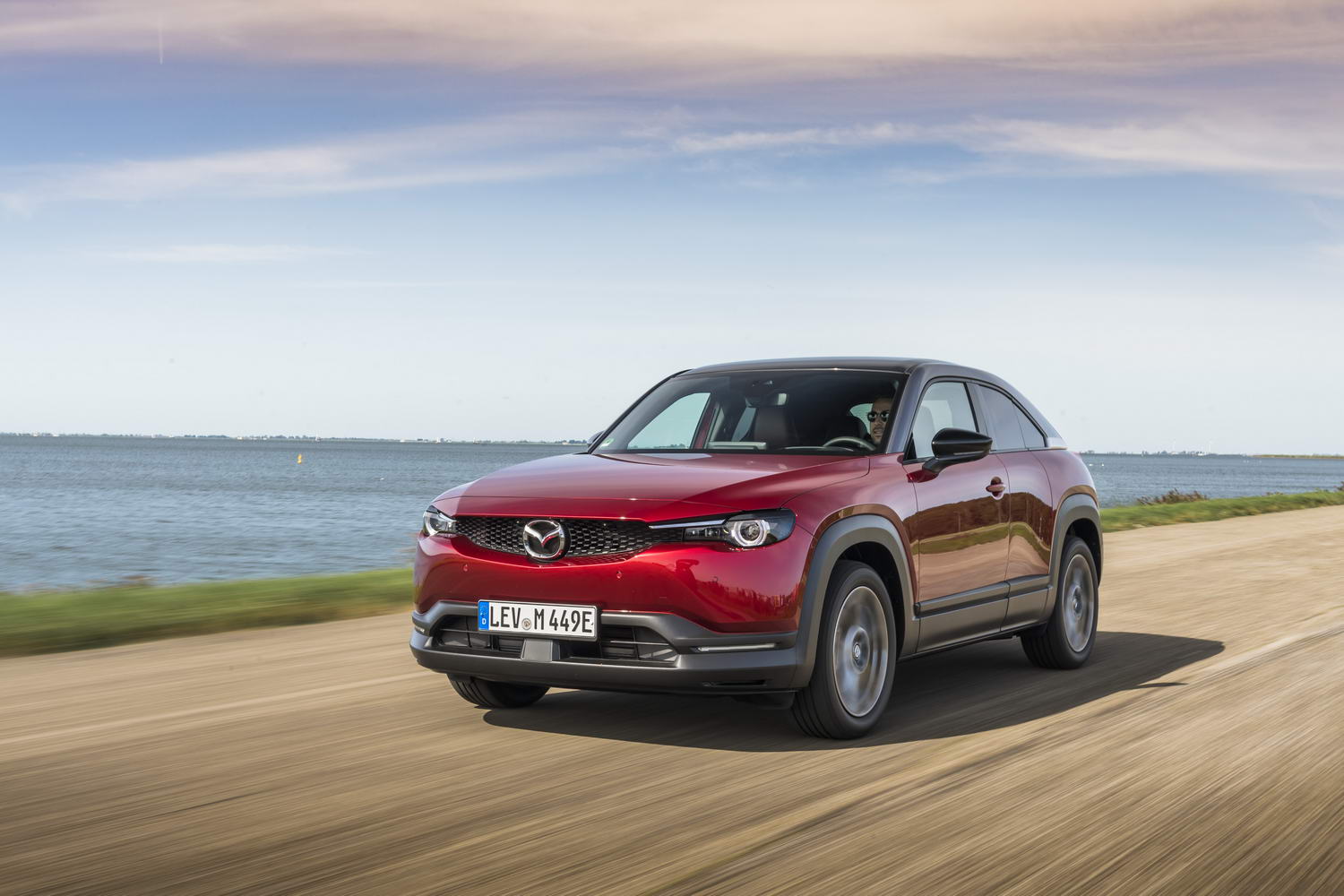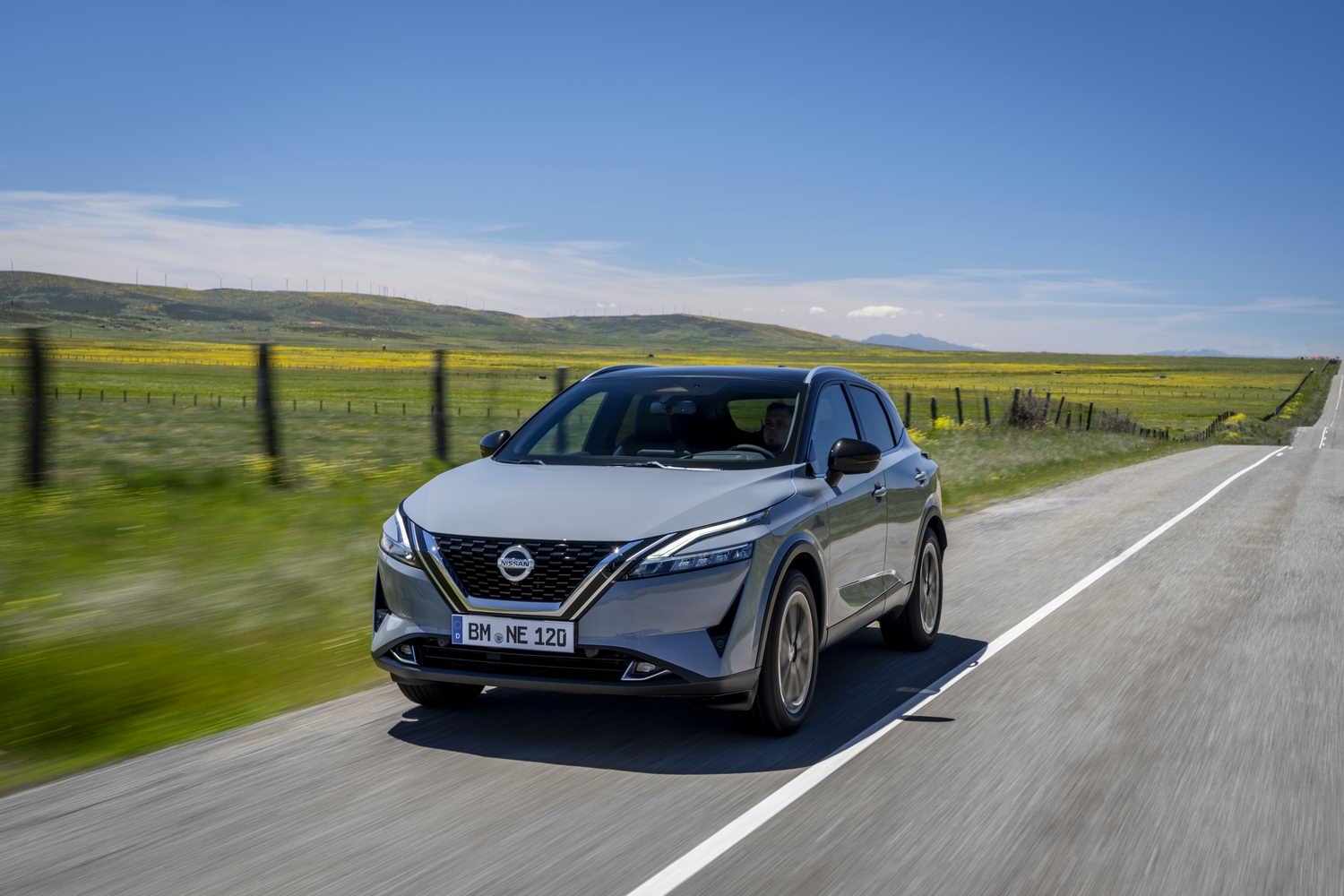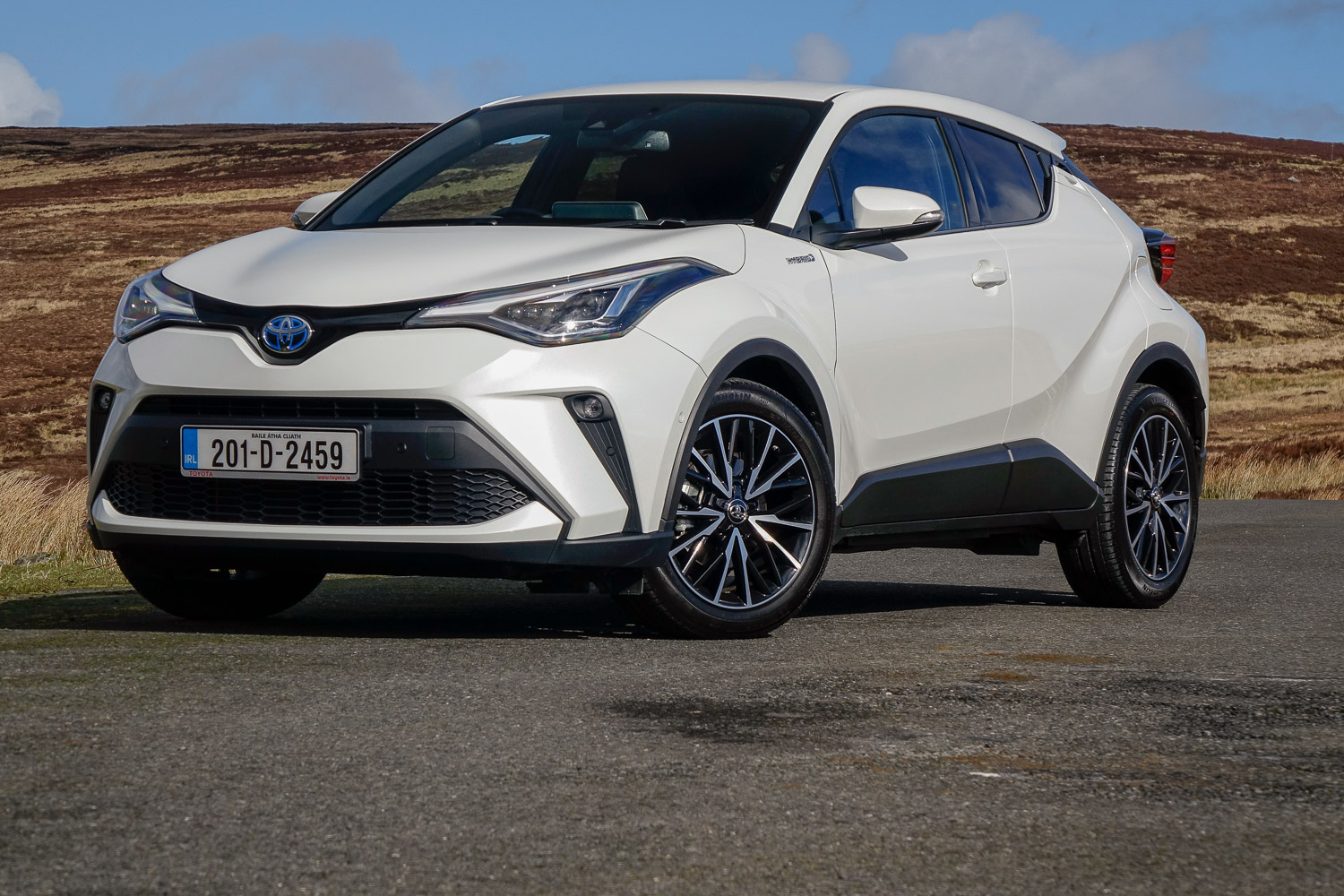Many manufacturers lay claim to be the first with things, and Honda is no different. The original HR-V was apparently the first crossover as we know them today and now it's back as an all-new third-generation model that will be exclusively available as a hybrid - hence the e:HEV after its name.
In the metal
Were it not for the 'H' on the grille of the new HR-V e:HEV, you might need a couple of guesses before you got that it was a Honda. The company is in the midst of a renewal of its model range in Europe that began with the electric Honda e and was followed up by the similarly cute Jazz. The HR-V (let's drop the e:HEV bit) is less distinctive due to the almost minimalist execution of its exterior design.
Depending on the specification grade, the slatted front grille is painted to match the bodywork in an effort to emphasise its electrified powertrain. Were it fully electric that grille would likely be filled in, so the partly open look is a nod to its hybrid nature and the presence of an engine behind. The long bonnet adds some design interest as does the sloping roofline.
It's coupe-like as Honda says, but there's less of a compromise to rear passenger space than you might think. Integrating the rear door handle into the C-pillar and window surround tidies up the side, leaving only the front door handle to bisect a feature line that runs from headlight to taillight. Some might also see it as a nod to the original HR-V's two-door design.
Black bodywork inserts around the wheel arches and along the rocker panel contribute to more of a high-riding look, but Honda stops short of adding chunky plastic cladding to pretend it's a tough off-roader. The HR-V is primarily a road-biased car, and its existence is more down to "needs of the time" say Honda. Basically, lots of people want crossovers for practical and aesthetic reasons more than out of necessity, so Honda is continuing with it.
A lower roofline and more raked rear dramatically change the look of the Honda compares to its predecessor. However, as it is slightly longer, the boot space isn't so negatively impacted. Opening the tailgate reveals a wide aperture and only a small load lip. The volume is 335 litres and the 60:40 split folding rear seats tumble forward to bring cargo capacity up to a maximum of 1,305 litres.
The HR-V also uses Honda's patented 'magic seats' where the bases of the rear seats can tilt upwards to create a load space for taller items. It's a novel design that couldn't be easier to use. For passengers in the rear there's an abundance of space, both in terms of head- and legroom - far more than you'd expect.
Up front there's a high degree of quality to the materials in use, and even the action of the buttons and 'click' of the dials for the temperature controls are reassuringly good. You might not automatically associate Honda with premium, but the way it's all put together is as good as what anyone else in this segment is doing.
A nine-inch touchscreen display is of high resolution and seems quick to react to inputs. There's the usual Bluetooth, Android Auto and Apple CarPlay included and below is a bank of controllers for the temperature and climate controls. The dashboard has a very clean look to it, with a logical tiered layout that is designed to be intuitive. A row of vents bisects the fascia spanning the width of the car and there are nifty inverted L-shaped vents that help to better distribute air around the cabin.
Driving it
Right from the off the Honda HR-V earns points for its driving position. The driver's seat and steering column have plenty of adjustability, though it's the driver's view that is more noteworthy. The steeply angled windscreen and slender A-pillars that are set more rearward result in excellent visibility. The large door mirrors are also set a little further back, creating a gap between them and the A-pillar, thus eliminating another common blind spot that can obscure cyclists and pedestrians.
Honda uses a similar battery to the Jazz, but it features a newer 60-cell design that is 1mm thinner due to the relocation of the power control unit to the front of the car. It's this change, and the increase in energy density, that enables the HR-V to perform a lot of its sub-40km/h driving in electric mode.
Alongside the 1.5-litre engine that runs on the more efficient Atkinson cycle, the HR-V drives without a conventional gearbox. The fixed-gear transmission reduces friction and losses, thus improving overall efficiency. At higher speeds, such as driving on a motorway, the engine directly powers the wheels, but when less power and speed is needed, the engine reverts to powering a generator that produces energy to drive the electric motor. In traffic and when pulling away, the electric motor is powered by the battery, and this also recuperates kinetic energy in the same way other hybrids do, when slowing down.
If all that sounds wildly complicated then fear not, because it drives like a conventional (CVT) automatic and there's nothing new to learn to drive it. The pure electric mode is as smooth and quiet as you might expect and when the petrol engine activates to power the generator all you'll notice is a distant hum.
Things do get a bit more vocal when the petrol engine is powering the car on its own and at times, such as uphill and under heavier power load, it can sound strained. But it's worth remembering that this is a hybrid, and that four-cylinder engine isn't especially powerful in the first place. If you're more likely to be driving at lower speeds, then this won't be an issue at all.
Comfort is another area that Honda decided to focus on, which is refreshing when many manufacturers opt for larger wheels and stiffer suspension setups to instil the sense of their car being more dynamic and sportier.
There's just enough body lean in corners to keep things comfortable without being detrimental to overall handling. At medium speeds the Honda rotates nicely in corners and while there's plenty of bump absorption, lateral body movement is kept well in check, too.
It is quite a composed car for the most part and can be very refined once you keep it working within certain parameters. Even with faster German motorway driving and some more interesting winding country routes, we still saw the trip computer dip down below 5.0 litres/100km, which was pleasantly surprising.
What you get for your money
There is no pricing or specifications confirmed for the Irish market just yet as this car isn't slated to begin deliveries until 2022. As there is only a single powertrain option for the HR-V, the only differences will be down to equipment grades. Once these are confirmed, this section of the review will be updated.
Summary
From an engineering standpoint the hybrid powertrain that Honda employs is quite interesting, though in reality it doesn't differ a great deal from other hybrids, save for some smoother electric running. It's potentially quite economical to run, but really it's the quality, functionality and, to a certain extent the styling, that will lure people to this car. Honda once again continues to show how it can produce clever cars.

